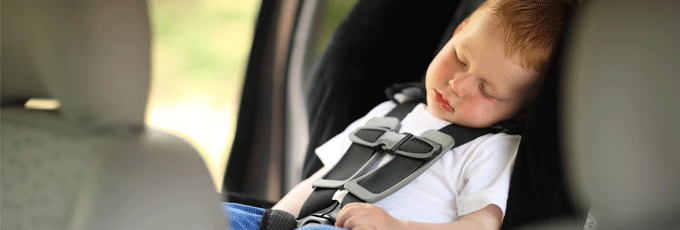With almost 1,600 children rescued from cars in Victoria alone last year, we cannot stress enough just how important it is to make the right choice and never leave your child in the car. Even on a day where temperatures are only in the mid-20s, inside the car can still reach temperatures that are fatal to young children.
In December 2013 Kidsafe Victoria released this article warning of these dangers. The Minister for Children and Early Childhood Development, Wendy Lovell, urged parents to consider the risks they were taking, particularly in the middle of summer where in-car temperatures can be harmful to even the healthiest of adults.
So with this in mind, never leave your child in the car by themselves. Even if you plan to be just a couple of minutes, all it can take is a phone call or a long line at the shop for that couple of minutes to turn into 10 or 15 and by that time it may already be too late. It is not worth the risk.
In mid-2013, Red Castle Productions released this US Public Service Announcement which shows exactly how easily it can happen to anyone who makes the wrong choice. It is definitely worth watching.
Important Facts
- 1,574 children were rescued from cars in Victoria in 2013
- On a typical summer’s day a child’s life can be in danger in just a few minutes
- Temperature inside the car can be up to 30 degrees hotter than outside!
- In a test carried out by Ambulance Victoria on a 29 degree day where the car had been cooled to just 20 degrees, it took just 10 minutes for that temp to more than double to 44. After 20 minutes it had tripled to a lethal 60.2 degrees!
- Even a healthy adult will be in serious danger after just 10 minutes in 60 degree heat
What is Hyperthermia
Not to be confused with Hypothermia (a dangerous drop in core body temperature), Hyperthermia occurs when the body is subjected to more heat than it can dissipate; basically, being placed in an environment that is hotter than your body can handle which causes a rise in core body temperature.
Our bodies work to keep a constant core temperature in all conditions. On a hot day you will begin to sweat in an attempt to stay cool. While this is an effective mechanism for adults, a child’s smaller body size and underdeveloped nervous system mean they cannot cool themselves efficiently which can expose them to severe dehydration, organ failure and death in a very short period of time.

What are the Symptoms
It is so important to recognise the signs of hyperthermia early and react fast. Whether you are sitting in the car, inside the house or even just out for a walk, always keep an eye out for the following symptoms on a hot day and respond immediate if your child:
- Seems tired and lethargic
- Has dark, sunken eyes
- Is irritable or crying
- Has fewer wet nappies than usual
- Has hot and dry skin or looks pale
- Has a dry and coated-looking tongue and mouth
- Has a high temperature
- Is vomiting or has diarrhoea
- Is not eating or drinking
To avoid dehydration and hyperthermia, always be sure to dress them appropriately for the conditions. On a hot day try to keep them in the shade, provide lightweight clothing and always give them a hat.
How to Treat Hyperthermia
If you do happen to notice some of these symptoms, you need to take action straight away as prolonged exposure can be deadly.
- Move them to a cooler location immediately
- Stay out of the sun
- Remove their clothing if appropriate (or as many layers as possible)
- Give them plenty of water
- If it is a very hot day, either use a cool, damp sponge or cool bath to help drop their temperature faster
- If their condition appears to be serious, call an ambulance immediately
Common Misconceptions
There are a number of myths passed around which can make it difficult to tell fact from fiction. Below are some of the more common ones to be aware of.
| MYTH | FACT |
| Outside temperatures below 30 degrees are only dangerous over a long period of time | Heat death can occur when outside temperatures are in the low 20s |
| The car won’t get as hot if you crack a window | Studies have shown that cracking a window has almost no effect on inside temps |
| If you sit in the car with the child, you’ll know when they are getting too hot | A child’s body temperature rises 3 to 5 times faster than an adult. You may feel quite comfortable under conditions that are deadly to a young child. |




